Is my SNES Mini a fake?
I'm afraid so. But it's a pretty good one.
22 March 2015
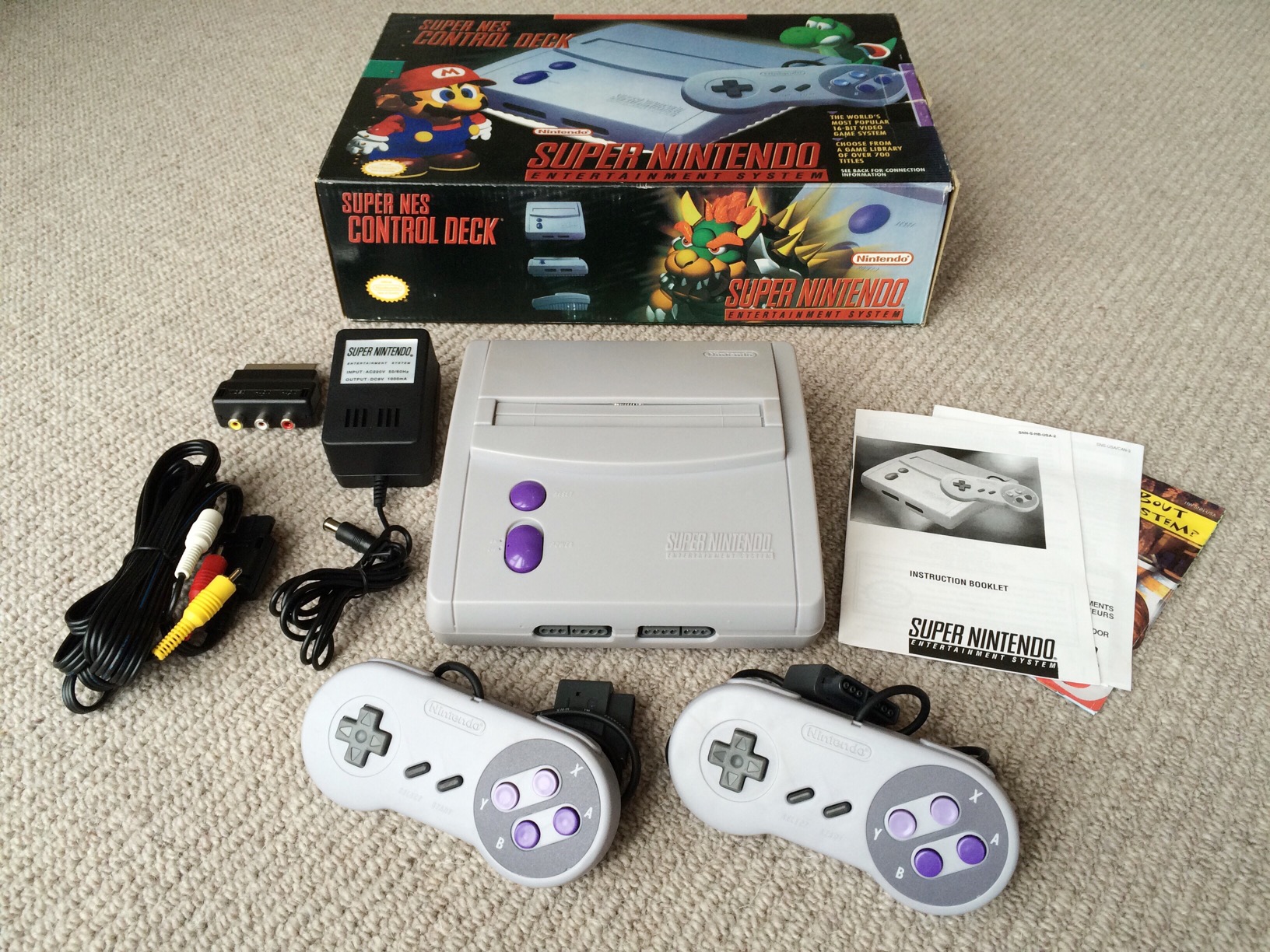
The Super Nintendo remains my favourite video game console of all time. I had a PAL SNES when I was growing up, and spent many a happy hour with friends and siblings while we searched for every exit in Super Mario World and every piece of heart in The Legend of Zelda: A Link To The Past.
Several years ago - mid-2000s, I can’t remember exactly - I saw a modded NTSC SNES Mini (a.k.a. SNS-101) for sale online and decided to buy it. When the console arrived I had a few doubts about whether it was genuine, but the price was good, it played my games fine and the 50/60Hz switch worked like a charm, so I thought nothing more of it.
Cut to 2015, and after tidying up my collection I decided it was time to get to the bottom of things. TL, DR: it’s a fake, albeit a pretty good one. Read on to find out more.
First impressions
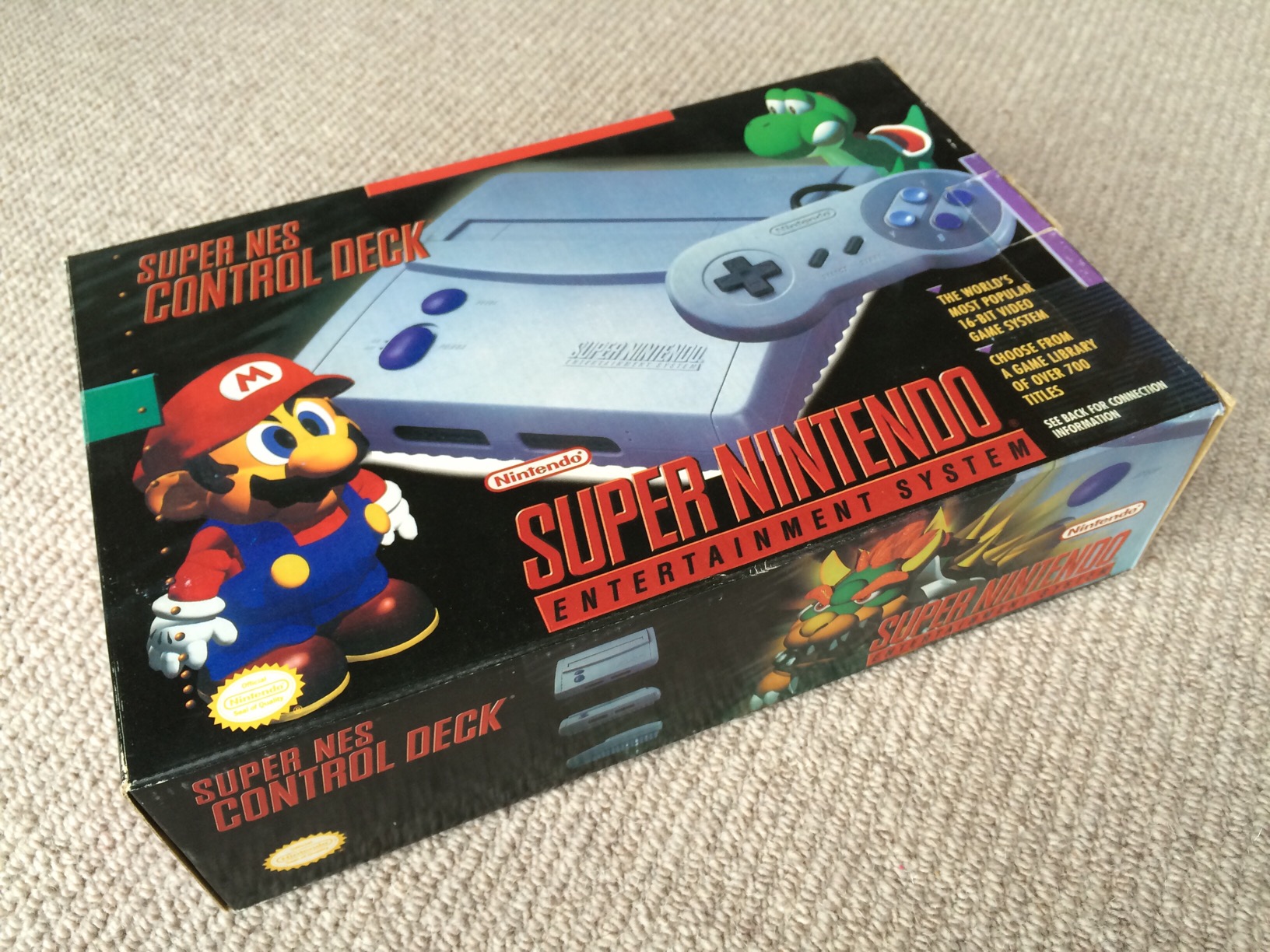
The box is good quality, sharp corners and all the usual Nintendo stylings. The colour reproduction looks a bit over-saturated, but maybe that’s how they like things stateside.
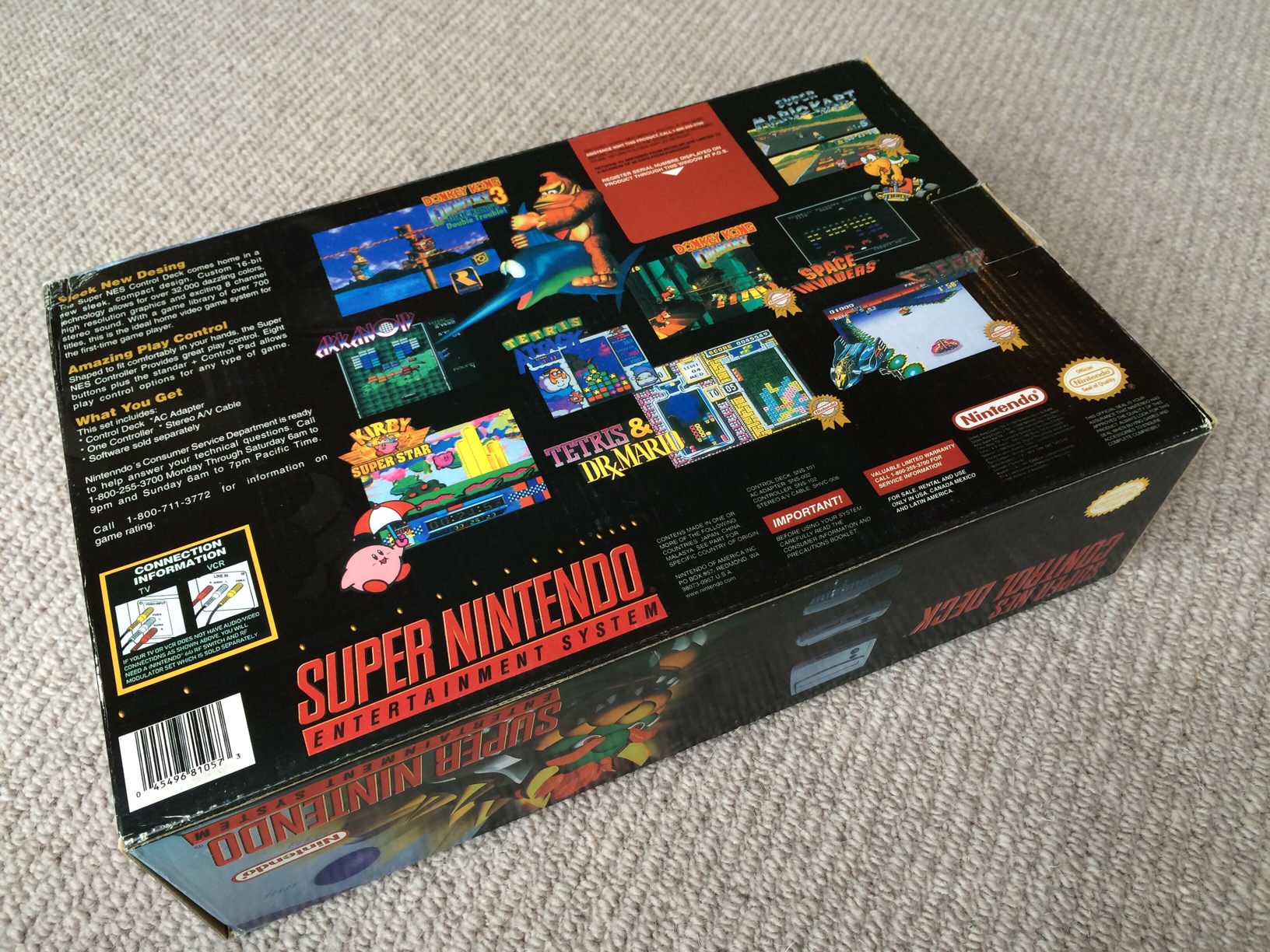
The back of the box looks ok too, although there’s at least one deliberate mistake that we’ll come back to later.
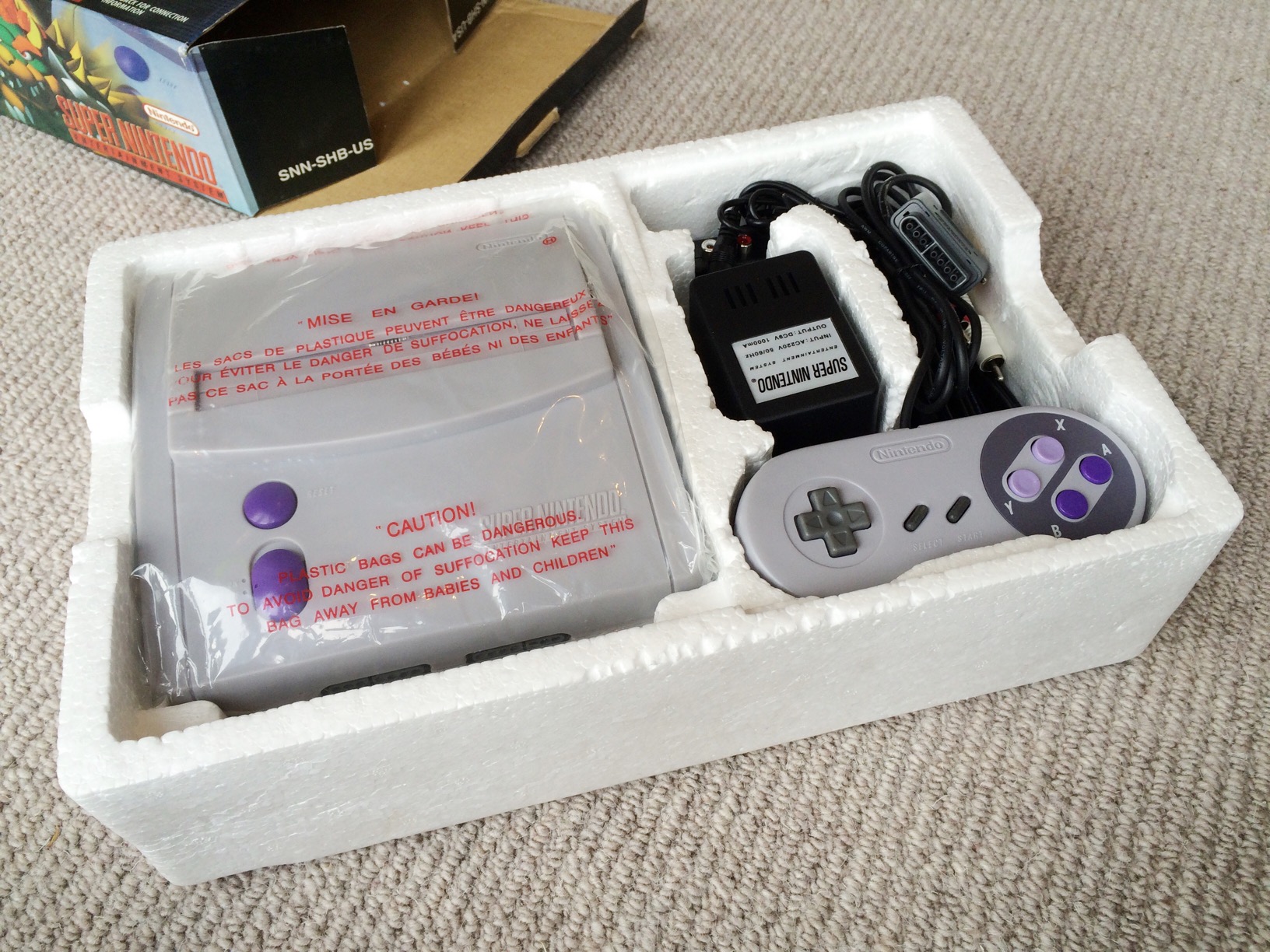
The polystyrene insert looks right. The console is bagged, as are the instruction booklet, consumer information leaflet and Nintendo Power flyer.
External details
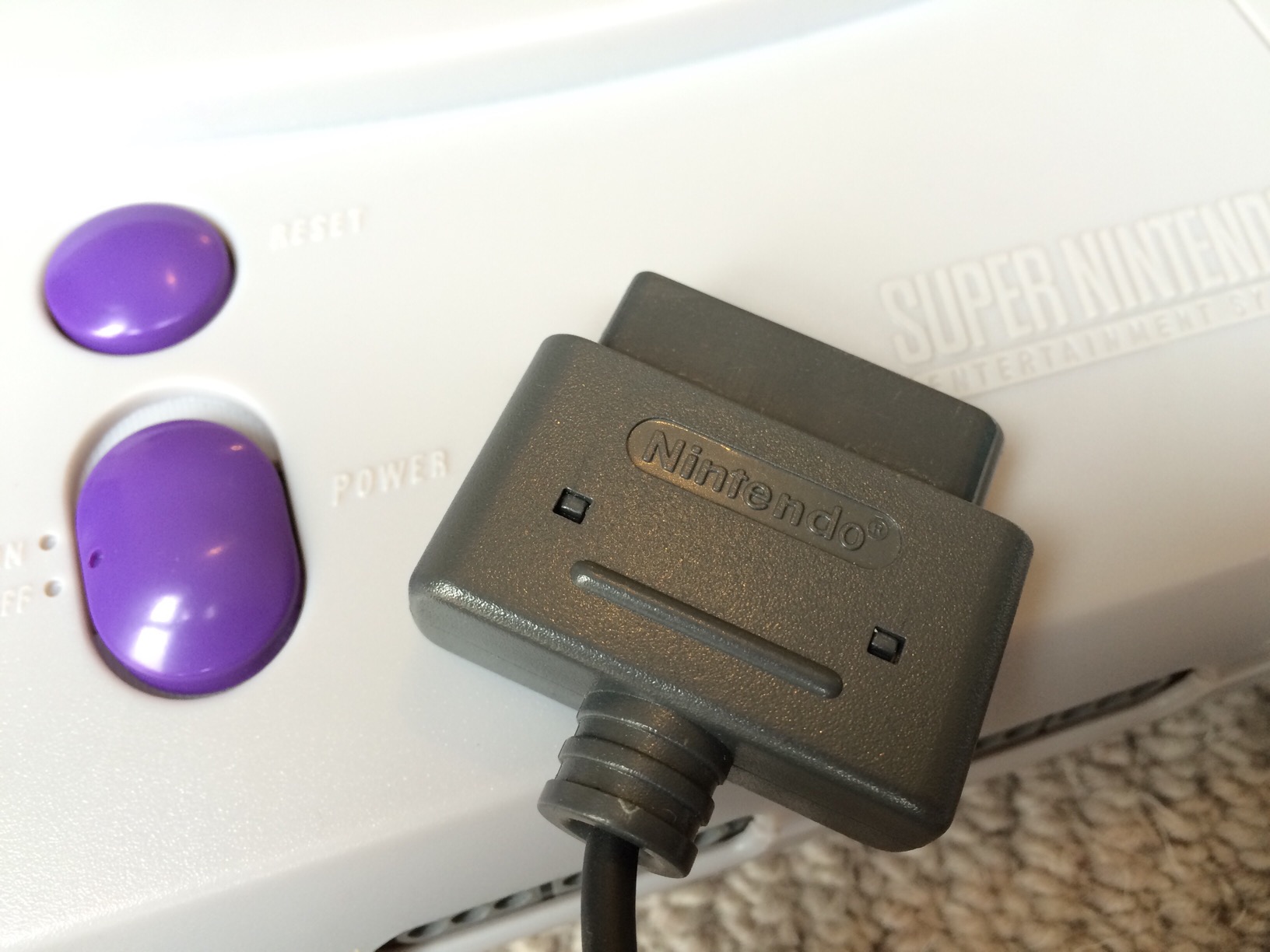
Everything is the right shape and size, but some of the details are off. Here you can see the Nintendo branding on the controller connectors uses the wrong font.
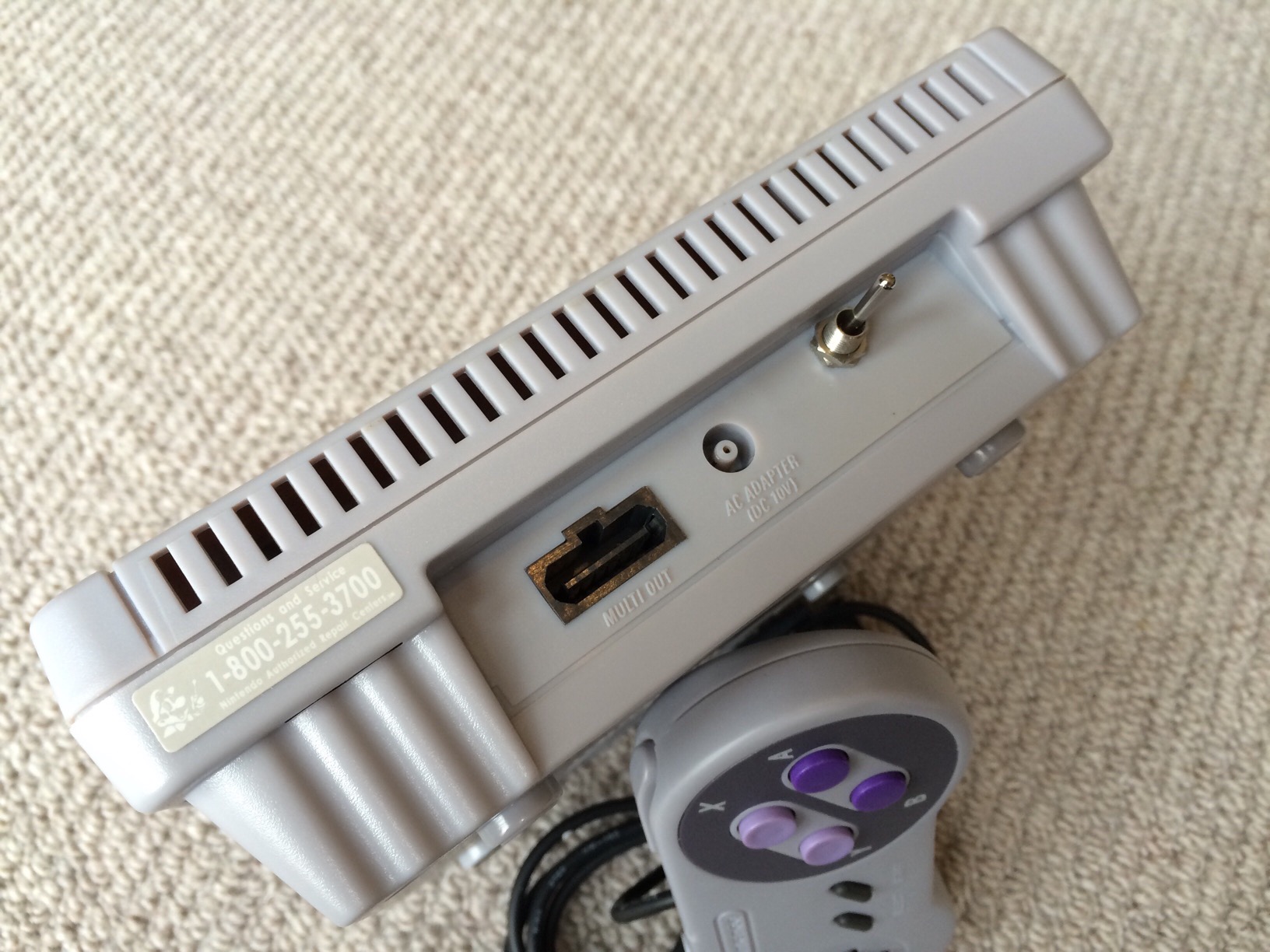
The Repair Centre sticker on the back is present, but it looks like a copy. In this photo you can also see the 50/60Hz switch which was added to the console when it was modded.
Serial number
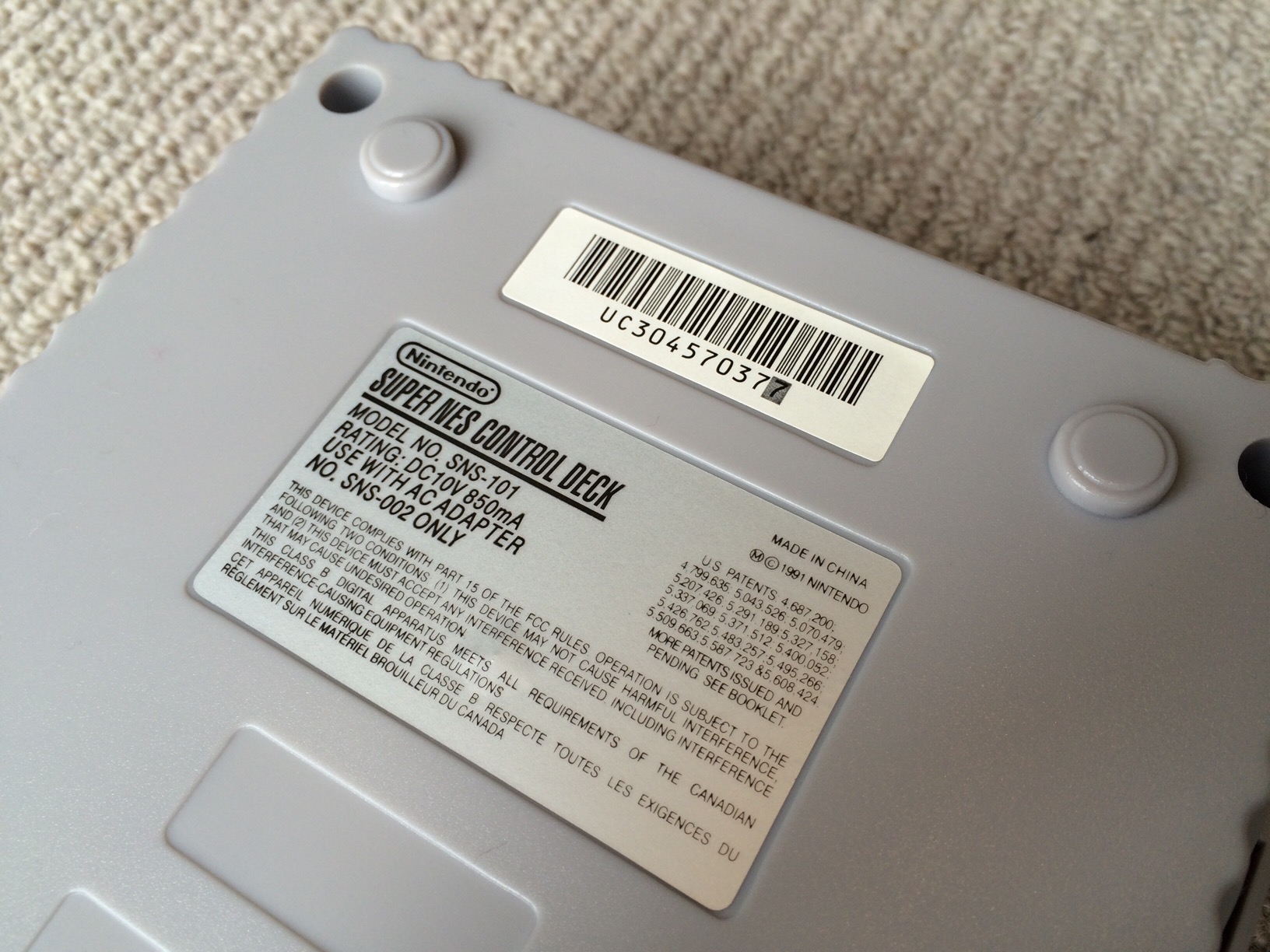
There’s a serial number and barcode in the right place, but it too looks like a copy. Similarly the system label is present but the fonts don’t look quite right.

Here’s the packaging again, and you can see that there should be a window in the back of the box to scan the console’s serial number at point of sale. The hole is in the right place in the polystyrene insert, but the box itself is intact. The small print also contains a bunch of bizarre typos.
Internals
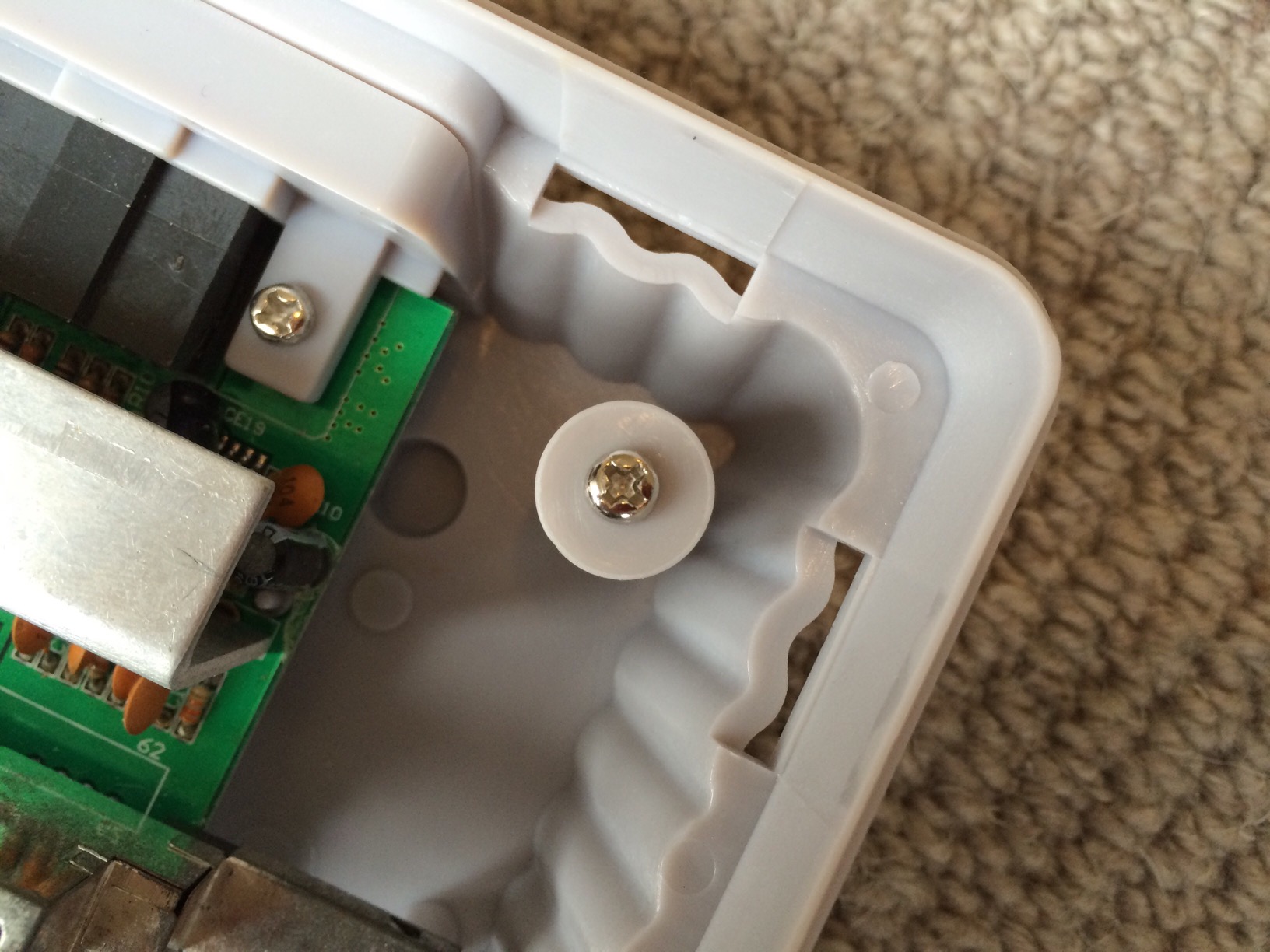
The case is held together with Phillips head screws rather than the usual Gamebit variety. This is a pretty strong giveaway that the console is a fake, but perhaps they were replaced at the same time the console was modded.
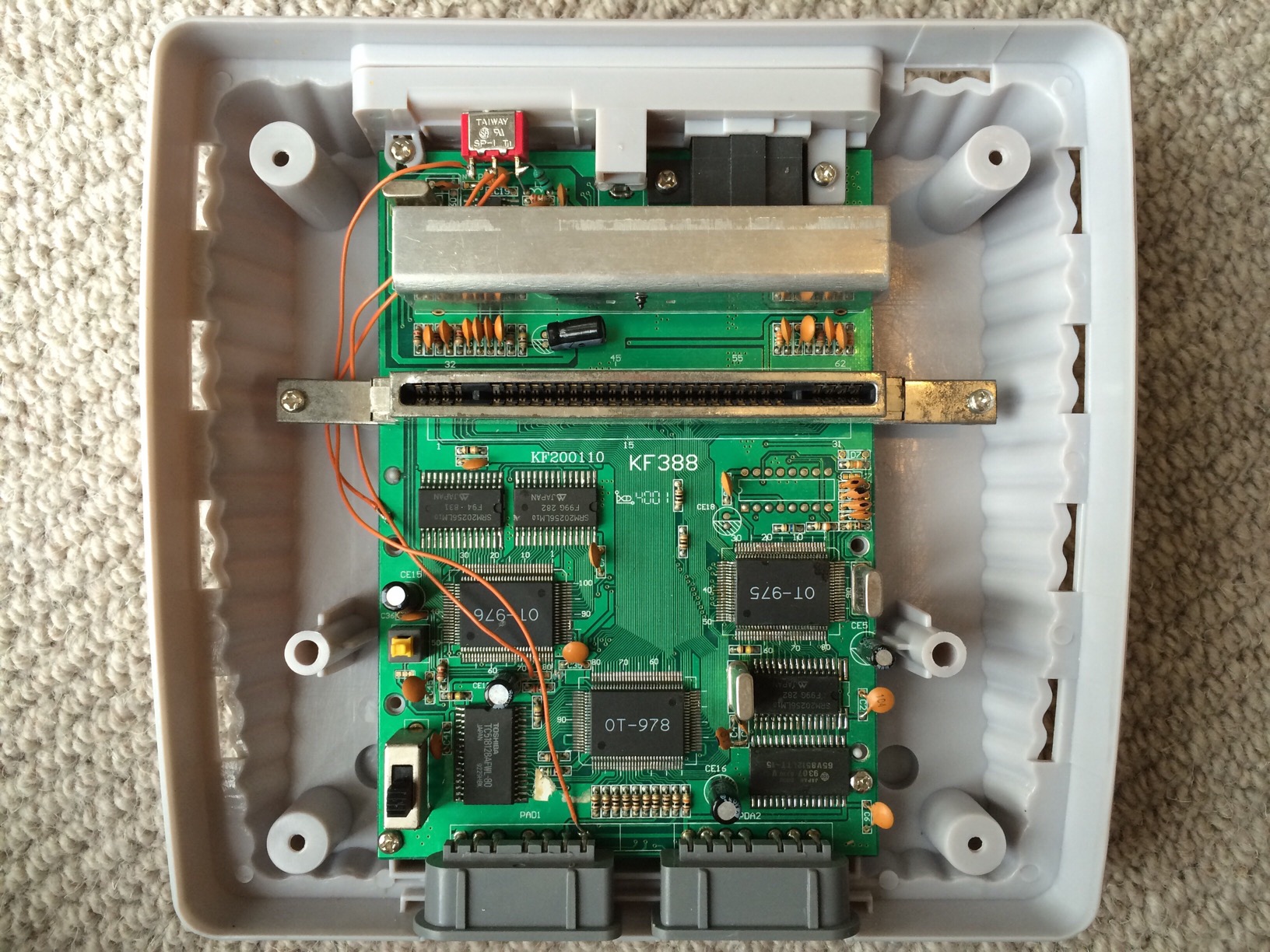
Here’s the inside of the system, which leaves no doubt that this particular console is a fake. Amongst other things there’s no RF shielding, the chip layout is wrong and the Nintendo branding is missing. Here’s a photo of a genuine SNES Mini motherboard to compare it with. The orange wires were added when the console was modded, and drive the 50/60Hz switch.
What about the games?
The console itself might be a fake, but that doesn’t mean it doesn’t work.
Both NTSC and PAL carts fit the console, and the ones I had when I bought the console booted without needing an import adapter (another clue that the console has been modded and / or is a fake). A few needed to be run at their native speed, since some PAL titles don’t work properly at 60Hz, but otherwise nothing to complain about.
I’ve since acquired a few games that are a bit fussier about the hardware they run on, so I thought I’d put the console through its paces and see what it’s capable of. I’ve tested all of the games below on real Nintendo consoles to check they work ok, so if anything funny happens we’ll know it’s the console and not the cart.
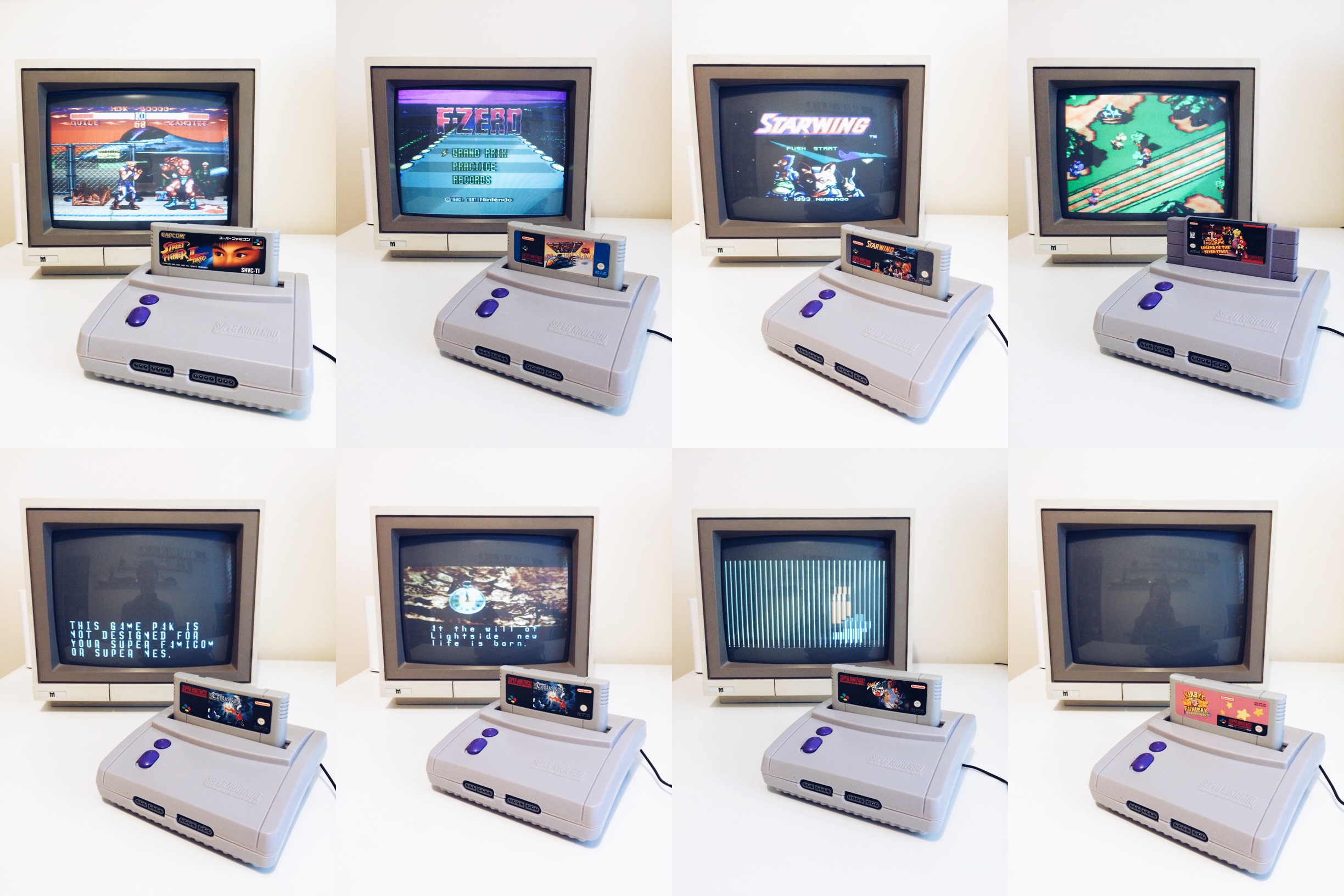
1. Street Fighter II Turbo (NTSC) @ 60Hz
This is a regular NTSC cart. If this didn’t work then we’d really be in trouble.
2. F-Zero (PAL) @ 60Hz
This is a regular PAL cart. It works fine, so it looks like the region lockout chip in the console is either modified or missing.
3. Starwing (PAL) @ 50Hz
Starwing (Starfox in the US and Japan) has a Super FX chip onboard and extra pins on its edge connector. Runs without any problems.
4. Super Mario RPG (NTSC) @ 60Hz
Super Mario RPG uses the SA1 chip. It didn’t get a PAL release and it’s notoriously difficult to get the NTSC cart to work on a PAL console. This cart hasn’t been modified, and the console itself has either a missing or a modified region lockout chip, so it was a big surprise to see this game working.
5. Terranigma (PAL) @ 60Hz
Like several other titles, Terranigma checks that the console is running at the right speed before the game will start. Booting the console in 60Hz mode results in an error screen.
6. Terranigma (PAL) @ 50Hz
Switch the console to 50Hz mode and Terranigma works fine.
7. Street Fighter Alpha 2 (PAL) @ 50Hz
What a mess. Street Fighter Alpha 2 uses the S-DD1 chip and the graphics clearly haven’t decompressed properly. You can encounter the same problem with some early emulators.
8. Kirby’s Fun Pak (PAL) @ 50Hz
Nothing but a blank screen. This game also uses the SA1 chip. Also known as Kirby Super Star in the US and Kirby Super Deluxe in Japan, but I don’t have an NTSC cart to check whether one would work.
Conclusion
I’m not the first to investigate a fake SNES Mini console, and GameSX has a good side-by-side comparison of one with a genuine Nintendo console. Like others, though, I can’t help but be impressed by the lengths that someone has gone to to pass this console off as a genuine system. There are other SNES clones, but all of them are very easy to spot. This system, on the other hand, could easily pass for the real thing if you weren’t familiar with genuine Nintendo hardware.
It’s disappointing to discover that one of your consoles is a fake, but it’s also interesting to own a little bit of video game history. I’m still curious about where these systems came from, so if you’ve got any more info do leave me a note using the comments box below.